Friday, July 1, 2011
Corn plummets to 3-1/2-month low
 By Pratima Desai
By Pratima Desai
(Reuters) - Corn prices plummeted to 3-1/2 month lows on Friday on a report from the U.S. government which said stocks and sowing areas were both larger than market expectations.
Industrial commodities copper and crude oil came under pressure after surveys showed June factory activity in China grew at its slowest pace in 28 months, while gold's appeal was diminished by Greece's approval of a key austerity package.
U.S. corn futures slid more than 5 percent to $5.81-1/2 a bushel, their lowest since the middle of March, taking the contracts two-day fall to about 10 percent. It was down 4.8 percent to $5.90-3/4 a bushel at 10:43 a.m.
The U.S. Agriculture Department (USDA) said on Thursday farmers overcame a cold, rainy spring to plant 92.28 million acres of corn, the second largest area since World War Two.
It also said there were 3.67 billion bushels of corn were in storage on June 1, 11 percent above expected.
"We are in a very volatile period, it corresponds to the news from the United States on the planting, the expected harvest and the stocks," said Koen Straetmans, senior strategist at ING Investment Management.
Straetmans cut his agriculture exposure to neutral two weeks ago from overweight.
"There were rumours that the corn supply situation was improving," he said. "I still think corn is attractive because global stocks are the lowest since the mid 1970s."
Grains prices in recent years have been boosted by strong demand growth from China and other developing market economies, for use as animal feed, while corn is also used to make ethanol.
JUST EXPANDING
Commodities posted the largest quarterly loss since the 2008 financial crisis. The 19-commodity Reuters-Jefferies CRB index <.CRB> finished the second quarter 6 percent down.
Brent crude oil on Friday was down 1.1 percent at $111.30 a barrel after data from China raised concerns of weaker fuel demand in the world's second-largest oil consumer.
The oil market is also watching how well the market can absorb the release of emergency stocks as Germany, the Netherlands and the United States sought bids for their crude supplies.
China's official manufacturing purchasing managers' index (PMI) fell to 50.9 points in June from 52 in May, weaker than the expected 51.3, as new orders -- a strong indicator of future activity -- grew at a slower pace than expected.
The survey also dented copper prices as China is the world's largest consumer, accounting for about 40 percent of global consumption estimated at around 21 million tonnes this year.
"(China's PMI)is only just about at an expansionary level (50)," Commerzbank said in a note.
"The monetary measures introduced in recent months to rein in the economy and combat inflation are evidently taking effect. There is thus less need now to introduce any additional measures or tighten monetary policy any further."
Benchmark copper on the London Metal Exchange was trading at $9,455 a tonne from $9,430 on Thursday.
Spot gold hit a six-week low below $1,490 a troy ounce from $1,499.60 late in New York on Thursday.
Gold used as an inflation hedge has been sold alongside oil. A firmer dollar against a basket of currencies <.DXY>, which makes gold priced in the U.S. currency cheaper for holders of other currencies, is another reason behind sales.
"The seeming resolution of the Greece crisis has probably hurt gold, but I think there's enough interest from the Chinese and central banks to sustain it at around $1,500 for now," said David Thurtell, an analyst at Citigroup.
(Reporting by Pratima Desai; additional reporting by Rujun Shen and Jan Harvey)
Source: http://sg.finance.yahoo.com/news/Corn-plummets-3-1-2-month-low-rsg-1087434719.html?x=0
Corn Extends Worst Monthly Loss Since 2008 on Acreage Increase
 July 1 (Bloomberg) -- Corn fell for a third day in Chicago, extending the biggest monthly drop since October 2008, after the U.S. reported acreage and inventories that topped analyst’s estimates. Wheat reached an 11-month low.
July 1 (Bloomberg) -- Corn fell for a third day in Chicago, extending the biggest monthly drop since October 2008, after the U.S. reported acreage and inventories that topped analyst’s estimates. Wheat reached an 11-month low.
U.S. farmers planted 92.282 million acres of corn this year, 1.8 percent more than projected by analysts in a Bloomberg News survey and the second-highest since 1944, the Department of Agriculture said yesterday. Stockpiles as of June 1 were 3.67 billion bushels, 12 percent higher than forecast.
Increased grain supplies may ease global food-inflation concerns after prices measured by the United Nations climbed to a record in February. Tyson Foods Inc., the biggest U.S. meat processor, estimates the increase in corn and soybean costs is approaching $500 million from a year ago, James V. Lochner, chief operating officer, said May 9.
“In recent seasons, the USDA has surprised the market on a number of occasions with its data releases and today’s revisions to its planted area and quarterly grain stocks estimates in the grains markets were no exception,” Rabobank International said in a report dated yesterday.
Corn for December delivery slumped 31.5 cents, or 5.1 percent, to $5.89 a bushel by 11:10 a.m. London time on the Chicago Board of Trade. Prices reached $5.815, the lowest for the most-active contract since Dec. 16. The grain is up 53 percent in the past year.
More Sowing
“We’ve started to see a production response,” Michael Creed, an agribusiness economist at National Australia Bank Ltd., said by phone from Melbourne today. “Prices will subside when the crops are off.”
Farmers boosted corn seeding even as wet weather delayed fieldwork from Ohio to North Dakota. Prices rose to a record $7.9975 a bushel on June 10, spurring growers to plant through the month instead of switching to soybeans, which have a shorter season. Corn sowing typically is finished in May.
“The market is now faced with an additional 300 million bushels of corn to factor into prices,” Rabobank analysts led by London-based Luke Chandler said in an e-mailed report.
Worldwide wheat and corn harvests will be bigger than expected because of an improving outlook in the U.S. and China, the International Grains Council said yesterday.
While the USDA reports are bearish for the grain market, the agency may lower its estimates on U.S. acreage and stockpiles in its next report, according to Rabobank.
Acreage Revision
The USDA said it plans to survey farmers in Montana, Minnesota and North and South Dakota on acreage planted for corn, soybeans and durum and spring wheat because a large percentage of the acres remained to be sown when the latest survey was conducted in the first half of June. A revision in acreage may be released on Aug. 11, it said.
The rally in corn prices has yet to end, David Stroud, chief executive officer of New York-based hedge fund TS Capital Partners, said in an e-mail today.
“Incomplete crop reports coming out of the U.S., unpredictable weather worldwide, consumption at historical highs and tight supplies will cause corn prices to move back up by year end,” Stroud said.
Wheat for September delivery gained 2.25 cents, or 0.4 percent, to $6.165 a bushel, erasing a drop of as much as 3.6 percent. The most-active contract reached $5.92, the lowest level since July 28, 2010. Prices are up 23 percent in the past year.
Wheat Stockpiles
Farmers planted 13.627 million acres of spring wheat, 2.6 percent above estimates by analysts, the USDA said. U.S. inventories as of June 1 totaled 861 million bushels, topping forecasts by 4.6 percent.
Milling wheat for November delivery traded on NYSE Liffe in Paris advanced 3.50 euros, or 1.9 percent, to 188 euros ($273) a metric ton.
Soybeans for November delivery gained 12 cents, or 0.9 percent, to $13.06 a bushel in Chicago. The oilseed climbed 44 percent in the past year.
Planting of soybeans dropped to 75.208 million acres, less than analysts expected and below the 76.609 million estimated in March, as farmers switched to corn, the USDA said. Stockpiles as of June 1 were 619 million bushels, 4.6 percent more than forecast and above year-earlier supplies.
Rice for September delivery advanced 13 cents, or 0.9 percent, to $14.975 per 100 pounds after reaching $15.13, the highest price since June 9. The grain climbed 51 percent in the past year.
U.S. rice planting totaled 2.676 million acres, down 26 percent from a year earlier, the government said yesterday.
Wheat dropped 20 percent in the second quarter in Chicago, corn fell 10 percent, soybeans declined 8.2 percent and rice gained 6.1 percent. Wheat tumbled 21 percent in June, corn slid 17 percent, soybeans dropped 6 percent and rice slipped 1.4 percent.
The U.S. Federal Reserve’s second round of quantitative easing, also known as QE2, ended yesterday.
U.S. corn extends losses after USDA report
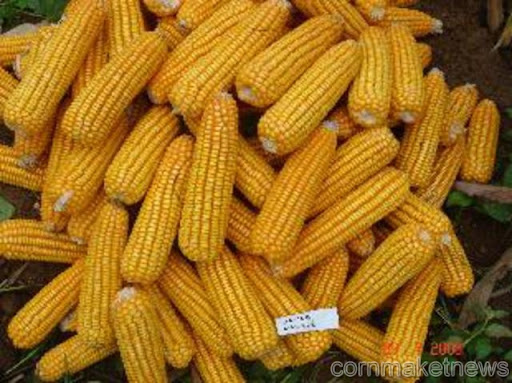 * Lower corn prices may see less demand for Australian wheat
* Lower corn prices may see less demand for Australian wheat
* High corn prices seen as key to larger U.S. stockpiles
* Coming up: Reuters/UMich sentiment, June; 1355 GMT
By Bruce Hextall
SYDNEY, July 1 (Reuters) - U.S. corn futures tumbled for the second day in a row on Friday after a U.S. government report showed that corn stocks were much higher than the market had expected and farmers planted the crop on a bigger area than anticipated.
The harvest month December corn contract dropped over 5 percent on Friday to $5.87-1/2 per bushel, adding to Thursday's tumble and taking the contract's two-day fall to nearly 10 percent.
"I think the whole market is confused about the UDSA (U.S. Department of Agriculture), supply and demand report," said Chris Kochnaski, a senior trader at Australia's Emerald Group.
"There are probably some factors that could keep markets bothered such as likely Black Sea exports again and if weather in the northern harvest goes smoothly it is likely to put pressure on Aussie feed wheat," said Kochanski.
The September corn contract Cc2 fell to is lowest permitted for the day, dropping 45 cents to $6.03 before picking up to $6.07.
Corn's plunge came as the USDA report raised crop prospects and stock levels, testing the stage for further losses in Asian and European trading on Friday.
Wheat also fell in early trade as some end-users have switched to feed wheat as corn was getting too expensive but the contract was less volatile as wheat supplies are more ample than corn.
The December wheat contract initially fell over 2 percent before recovering to trade broadly flat by mid-afternoon, when it traded at $6.59 per bushel, up a touch on the previous day.
"Part of the problem in Australia I think is also a lack of capacity to shift Australian wheat out of Australia on the east coast given logistics," said Kochanski. "So that is likely to pressure feed wheat prices," he said.
Australia produced a record 23.2 million wheat crop in 2010/11, most of which was grown on the east coast where rain at harvest reduced large quantities to feed grade quality.
A large amount expected to gobbled up by Asian livestock feed but Kochanski said Asian buyers still preferred corn despite its higher price. Steve Burt, managing director of Pentag Nidera, the Australian arm of privately owned Dutch firm Nidera, said the market is currently very challenging.
"We don't know whether it as a bottom or not but there are certainly lessons to be learned," he said.
The USDA said it planned to re-survey farmers in the states of Minnesota, Montana, North Dakota and South Dakota on Aug. 11 which may provide a clearer picture of actual planted acreage.
The November soybeans contract Scv1 was up nearly 1 percent to $13.06 a bushel.
(Editing by Balazs Koranyi)
Thursday, June 30, 2011
Corn prices dive on US acreage, stocks shocker
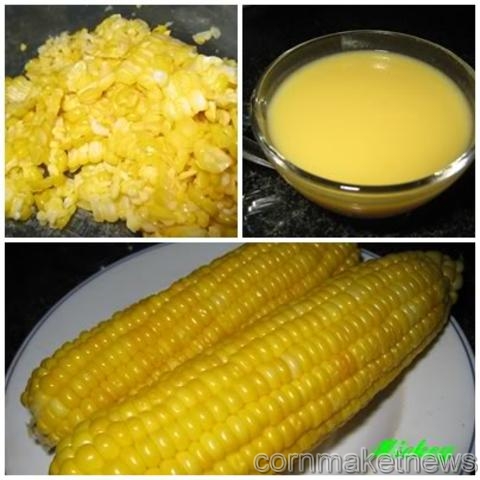 Reuters
Reuters
WASHINGTON/CHICAGO - Reports showing a surprisingly large US corn crop and bigger-than-expected stockpiles alleviated fears that Midwest flooding would take a heavy toll on grain output, sending corn futures sharply lower and alleviating some concerns about global food prices.
Corn was felled by a one-two punch from the US Department of Agriculture's annual acreage and quarterly grain stocks reports, which showed ample supplies despite months of fretting over dwindling stockpiles which drove corn prices to record highs in recent weeks.
"American producers stepped up," US Agriculture Secretary Tom Vilsack told Reuters Insider, noting technology has boosted yields and mitigated concerns about tight world grain supplies.
Sky-high prices curbed demand, leaving June 1 stockpiles 11 per cent larger than traders had predicted.
The news could help ease price shocks that have rippled through to the bottom lines of US food makers and contributed to calls to limit commodity market speculation which many blame for driving prices higher and fanning global inflation.
General Mills and other companies that use US crops to make food have blamed high commodity prices for inflating costs and hurting earnings.
The harvest, however, is two months away. So there is still uncertainty about the toll of rain and flooding on crops, and grain markets remain volatile.
"I don't know if this piece of news is enough to completely take away the cost pressures," said Morningstar analyst Erin Lash.
"This is historic"
The report caused havoc in trading pits at the Chicago Board of Trade on Thursday, where corn for July delivery settled 10 per cent lower at $US6.29 a bushel -- a record decline by value and per centage -- and deferred contracts locked down the limit of 30 cents per bushel.
The July contract is in its delivery period and trading without limits.
With futures halted, traders rushed to the options pit, where panicked trading indicated prices could plunge again on Friday.
"There is nothing like this on the chart," said Rich Feltes, a veteran grain analyst with R.J. O'Brien, who has watched the market rise and fall for more than 35 years.
"This is historic," he said.
Before the report, corn prices had already slid 20 per cent from their peak near $US8 per bushel reached three weeks ago.
There was added drama for algorithmic traders.
A technical equipment glitch in USDA's guarded lock-up room led to the release of information by Reuters and other wire services two minutes earlier than scheduled, throwing off some computer programs.
"This is scandalous. Paris was the only market open when the USDA (data) was released. We had no warning that the report would be released earlier than scheduled and we want to know why," said a dealer at a leading broker in Euronext futures.
In London, the International Grains Council raised its forecast for world corn and wheat crops in the year ahead.
Harvest not yet in the bin
Red-hot demand from corn exporters, livestock feeders and processors had been expected to consume every bushel grown in 2010 and eat into reserves, but the higher stocks number was a sign that demand has been rationed.
US lawmakers are also weighing ending subsidies worth $US6 billion a year to ethanol makers, a move that could affect demand since about a third of the US corn crop goes to ethanol production.
The USDA said the corn stockpile was 3.67 billion bushels on June 1, and it pegged plantings at 92.28 million acres. With normal weather and yields, a record-large crop could be harvested.
But weather conditions have been far from normal, with flooding in key areas of the US Midwest. While USDA projections bode well for a record-large corn crop, an ample harvest is far from assured.
The USDA said it will resurvey farmers in four northern Plains states that normally produce a third of the US wheat crop.
A large per centage of those states had not yet planted crops as of early June, when the USDA conducted its acreage survey.
July wheat was down nine per cent at $US5.84-3/4 a bushel, posting its biggest per centage loss in more than two years in sympathy with the losses in corn. Wheat stocks were 4 per cent larger than traders expected and plantings were down marginally.
The USDA report was mildly supportive for soybeans, with plantings 2 per cent smaller than traders had expected. July soybeans were down two per cent at $US13.06-1/4.
The soybean crop would be the third-largest on record, but supplies are still expected to run tight.
Corn export net sales soar 85 percent
The USDA released the latest U.S. Export Sales report on June 30. The report indicated corn net sales of 691,700 MT, which is 68 percent above last week’s report and an increase of 85 percent from the four-week average.
Increases were reported for South Korea (107,400 MT), Venezuela (104,200 MT, including 30,000 MT switched from unknown destinations), Mexico (100,500 MT), unknown destinations (77,900 MT), Japan (54,300 MT, including 30,400 MT switched from unknown destinations and decreases of 10,600 MT), and Colombia (49,000 MT), were partially offset by decreases for Honduras (20,200 MT). Net sales of 242,600 MT for delivery in 2011/2012 were mainly reported for unknown destinations (100,000 MT), Japan (36,100 MT), Honduras (25,900 MT), and Jamaica (23,500 MT).
Exports of 655,200 MT were down 44 percent from the previous week and 33 percent from the prior 4-week average. The primary destinations were Japan (149,100 MT), Venezuela (94,400 MT, including 34,500 MT late reporting), Mexico (93,200 MT), Egypt (80,200 MT), South Korea (52,500 MT), and Panama (35,200 MT).
Corn futures closed mixed on Wednesday as old-crop contracts were supported by short-covering ahead of the UDSA’S June Acreage and Stocks reports due out on June 30. On Thursday corn opened 25 to 30 cents lower, and by midsession trading locked limit down.
Source: http://www.dairyherd.com/dairy-news/Corn-export-net-sales-soar-85-percent-124800184.html?ref=184
Corn Prices Plunge Amid Supply Increase
 Reuters - Corn futures plummeted more than 10% in early trading on Thursday after a U.S. government report said farmers were able to seed far more corn acres this spring than many analysts expected and that supplies are not as tight as many thought.
Reuters - Corn futures plummeted more than 10% in early trading on Thursday after a U.S. government report said farmers were able to seed far more corn acres this spring than many analysts expected and that supplies are not as tight as many thought.
Despite excessively wet conditions, a scramble to get corn seeded in key growing areas that was fueled by high prices has set the stage for a potentially record-large corn crop, and conversely a smaller soybean crop, according to the report issued Thursday by the U.S. Department of Agriculture. Higher-than-expected supplies of U.S. corn struck another bearish note for prices, pushing nearby CBOT corn down more than 70 cents early and back months down the 30-cent limit.
The declines leave corn with the biggest monthly fall since June 2009. The July corn contract has entered its delivery period and is trading without limits. CBOT wheat futures plunged as well, dropping 8% early, and soybeans dropped 2%, as the USDA report eases some of the concerns over key crop supplies in the world's top producer and exporter.
``There are some big surprises in this report,'' said Karl Setzer, commodity Trading Advisor for MaxYield Cooperative in West Bend, Iowa. ``All in all, what this shows us in the quarterly stocks report, we are not using grain at the pace we thought we were.''
USDA said farmers planted 92.282 million acres with corn this spring, above an average trade estimate for 90.767 million acres and well above the USDA's June 10 forecast of 90.700 million acres. The department estimated quarterly corn stocks as of June 1 at 3.670 billion bushels, above an average trade estimate for 3.302 billion and compared with 4.310 billion a year ago.
Traders said the fact that farmers were able to get so much corn in the ground despite flooding and heavy rainfall through the U.S. Midwest underscored how recent high prices pushed farmers to plant corn over soybeans despite the adverse conditions.
``Getting this much acreage planted is a surprise,'' said Shawn McCambridge, an analyst with Prudential Bache Commodities.
The government pegged soybean acreage at 75.208 million, below an average trade estimate of 76.530 million and below its March forecast of 76.609 million. But soybean stocks at June 1 were pegged by the USDA at 619 million bushels, above trade estimates for 596 million and last year's USDA estimate of 571 million bushels.
USDA estimated wheat stocks as of June at 861 million bushels, above trade estimates for 826 million and compared with 973 million a year ago. At 9:47 a.m. CDT (1447 GMT), CBOT July corn was down 70 cents, or 10.1%, at $6.27-3/4. July wheat was off 51-1/4 cents, or 8%, at $5.90, and nearby CBOT soybeans for July delivery were down 26 cents, or 2%, at $13.08-1/4.
MONTHLY DECLINE
Losses on this, the last day of the month, will leave the front-month wheat contract with its biggest monthly loss in at least two years. Soybeans are heading for losses of nearly 3% for June, which would be their third straight monthly fall, while corn has slid for a second straight month and is already down 6% for the period.
(Reporting by Carey Gillam; additional reporting by Julie Ingwersen in Chicago, Michael Hogan in Hamburg, and Naveen Thukral in Singapore; editing by Jim Marshall)
Corn prices plunge after USDA reports bumper crop
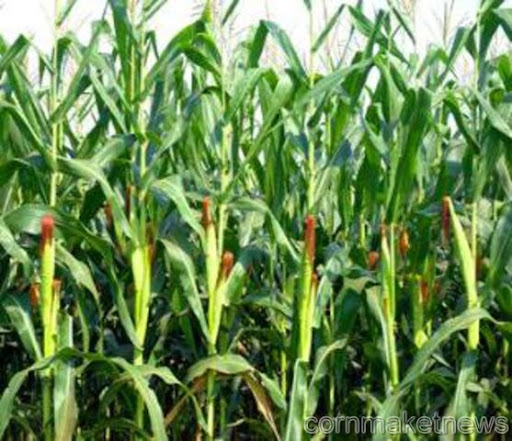 AP - Corn prices are plunging after the government reported that U.S. farmers have planted the second-largest crop in nearly 70 years.
AP - Corn prices are plunging after the government reported that U.S. farmers have planted the second-largest crop in nearly 70 years.
News of the huge crop took investors by surprise. Many had been expecting the wet weather this spring would keep the annual corn crop small. The only crop that was bigger in the past 67 years was planted in 2007.
This year's crop of 92 million acres is 9 percent larger than the average crop over the past 10 years. Farmers were highly motivated to plant corn rather than crops like soybeans after the price of corn hit a record of $7.99 a bushel this year.
Corn for December delivery fell 30 cents to settle at $6.205 a bushel Thursday. September wheat fell 9 percent to $6.1425 a bushel.
Source: http://sg.finance.yahoo.com/news/Corn-prices-plunge-after-USDA-apf-792111113.html?x=0
GRAINS-U.S. corn futures rise on tightening U.S. stocks
 SYDNEY, June 30 (Reuters) - U.S. corn futures continued to rally in early Asian trade on Thursday ahead of a key government report that is likely to show tightening U.S. stocks because of lower production and strong demand.
SYDNEY, June 30 (Reuters) - U.S. corn futures continued to rally in early Asian trade on Thursday ahead of a key government report that is likely to show tightening U.S. stocks because of lower production and strong demand.
Chicago corn for July delivery Cc1 advanced 0.5 percent to $7.01-1/2 per bushel following a 2.2 percent jump on Wednesday as old crop stocks tightened. The more actively traded December contract rose 0.38 percent to $6.53 but remained below a record of over $7.00 per bushel reached earlier this month when concerns about rain delayed plantings worried traders.
July wheat Wc1 rose 0.5 percent to $6.44-1/2 per bushel but still short of highs above $8.80 per bushel reached in February when fears were at their height that drought would impact on U.S. winter wheat production. Prices have eased as northern hemisphere harvest progresses and there remains ample supplies to meet demand.
Soybeans for July delivery were little changed with the July contract Sc1 up 0.1 percent to $13.35-1/2 per bushel as South American supplies hit international markets.
FUNDAMENTALS
* Floods, rains cast shadow over U.S. crop prospects
* As at June 1, corn stocks were estimated at 3.02 billion bushels, down more than 1 billion bushels from 2010, ANZ Banking Group estimated in a market report.
* ANZ estimated that the market had not yet rationed demand enough to avoid an ending stocks/use ratio of 5 percent this season, the lowest since 1996.
* The bank also estimated that U.S. soybean stocks are estimated at 596 million stocks, up from 25 million bushels in June 2010.
* The average estimate for wheat stocks at 826 million bushels, were down from 973 million bushels in June last year.
* High grain prices have done little to quench the thirst for corn in the livestock and ethanol markets, adding to stocks of the grain.
MARKET NEWS
* Oil jumped as much as 3 percent on Wednesday, ending at the highest level in a week, as sharp draw downs in U.S. crude and gasoline stocks fed a rally spawned when Greece passed an austerity plan to avoid a sovereign debt default. U.S. August crude CLc1 settled at $94.77, gaining $1.88, or 2.02 percent, the highest finish since June 22. {O/R]
* The euro rose to fresh two-week highs on the dollar in Asia on Thursday, swept higher by a wave of stop-loss buying and extending a rally after Greece moved a step closer to securing international aid. The common currency rose as high as $1.4483
after stops were triggered as it broke above the overnight night peak near $1.4450. It last stood at $1.4465.
* Wall Street closed its best three-day run in three months on Wednesday after the Greek parliament approved austerity measures to avoid defaulting on its debt. The Dow Jones industrial average gained 72.73 points, or 0.60 percent, to 12,261.42.
DATA/EVENTS
GMT
0500 - Japan housing starts May
0500 - Japan construction orders May
0600 - UK nationwide house prices June
0600 - German retail sales May
0800 - German unemployment June
1400 - US jobless claims Weekly
1345 - Chicago PMI June
Grains prices at 0030 GMT
Contract Last Change Pct chg Two-day chg MA 30 RSI
CBOT wheat 675.00 0.75 +0.11% +0.48% 748.81 34
CBOT corn 653.25 2.75 +0.42% +0.04% 702.51 49
CBOT soy 1322.00 -1.00 -0.08% +0.23% 1354.19 41
CBOT rice $14.39 $0.04 +0.28% -0.07% $15.25 21
WTI crude $94.85 $0.08 +0.08% +2.11% $96.86 53
Currencies
Euro/dlr $1.446 $0.003 +0.23% +0.65%
USD/AUD 1.069 0.001 +0.12% +1.44%
Most active contracts
Wheat, corn and soy US cents/bushel. Rice: USD per hundredweight
RSI 14, exponential
(Reporting by Bruce Hextall; Editing by Balazs Koranyi)
CBOT corn outlook: Futures to climb on supply concerns, China
 U.S. corn futures are expected to open higher Wednesday on concerns over the development of the U.S. crop, growing Chinese import demand and broad-based market strength.
U.S. corn futures are expected to open higher Wednesday on concerns over the development of the U.S. crop, growing Chinese import demand and broad-based market strength.
Traders expect corn to open 17 to 25 cents higher. In overnight trade, corn for July delivery at the Chicago Board of Trade was up 23 1/2 cents, or 3.4%, to $7.06 1/2 a bushel. The September contract was up 22 3/4 cents to $6.92 3/4 a bushel.
Corn futures continue to recover after falling sharply from all-time highs set at the start of the month. Analysts said a renewed focus on tight existing supplies and challenges the new U.S. crop faces are fueling the price strength.
"I think the market has overshot to the downside," said Jason Britt, president of brokerage Central States Commodities.
Traders are positioning themselves ahead of a closely-watched U.S. Department of Agriculture report Thursday that's expected to reaffirm supplies are tight and the new crop will be smaller than originally expected after wet weather prevented farmers from planting all the land they wanted.
Analysts on average expect the USDA to peg 2011 corn plantings at 90.776 million acres, according to a Dow Jones Newswires survey. The expected total is in line with an agency report earlier this month that put plantings at 90.7 million acres, but is below the USDA's original estimate in March of 92.178 million acres. In a separate report also due out Thursday, the agency is expected to estimate corn inventories as of June 1 at 3.324 billion bushels, down 23% from a year ago.
"We need every bushel, every acre and it's not happening," Britt said.
Further support for corn futures is expected from broad commodity strength after Greek lawmakers approved a new five-year package of spending cuts and other measures required before other euro-zone members will provide needed funds for a sovereign-debt package.
As for demand, China has bought at least 1.7 million metric tons of U.S. corn in the last four months--including 700,000 tons in recent weeks, according to traders, shipping executives and cargo surveyors interviewed this week by Dow Jones Newswires.
China became a net importer of corn in 2010 for the first time in 15 years, and its purchases are being watched closely, particularly as supplies in the U.S. run low. The U.S. is the largest exporter of the grain.
Still, analysts at Jefferies in a report Wednesday said they don't see corn reaching $8 a bushel, a level the front-month contract nearly breached in early June.
"We acknowledge the near-record low inventory levels for corn, but believe a softening global demand outlook when combined with recent favorable U.S. weather trends, improving prospects for competing crops [European wheat] and falling oil prices will likely prevent the return of $8 corn," they wrote.
--Sameer Mohindru in Singapore contributed to this report.
Wednesday, June 29, 2011
Corn futures climb to 1-week high on U.S. crop fears
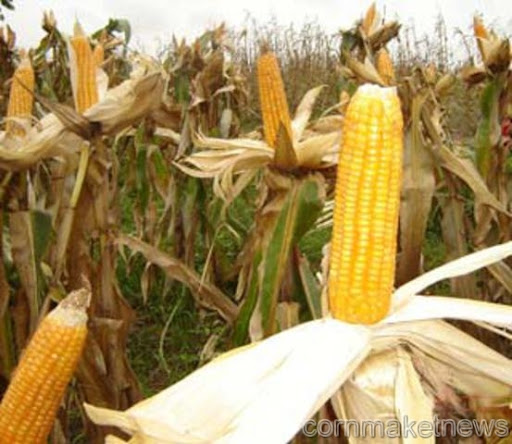 Forexpros - Corn futures were up for a second day on Wednesday, climbing to a one-week high as adverse weather conditions in key U.S. corn-growing regions threatened crops that were already deteriorating.
Forexpros - Corn futures were up for a second day on Wednesday, climbing to a one-week high as adverse weather conditions in key U.S. corn-growing regions threatened crops that were already deteriorating.
On the Chicago Mercantile Exchange, corn futures for September delivery traded at USD6.8838 a bushel during European morning trade, rallying 2.92%.
It earlier rose to USD6.9088 a bushel, the highest price since June 22.
The U.S. National Weather Service said on Tuesday that it expected warmer-than-normal temperatures and below-average rainfall across the Mississippi Delta states during the next ten days, potentially threatening yields and reducing the quality of the harvest.
The U.S. Department of Agriculture said in its weekly crop progress report earlier in the week that approximately 9% of U.S. corn crops were rated in 'poor' to 'very poor' condition last week, up from 7% in the preceding week.
Nearly 68% of the crop was rated 'good' to 'excellent', down from 70% a week earlier and below the five-year average of 73% for this time of year.
The U.S. is both the world's largest corn producing nation and the world's largest exporter of the grain.
Meanwhile, optimism that Greek lawmakers will vote in favor of harsh austerity measures needed to avoid a sovereign debt default later in the day saw the U.S. dollar weaken.
The dollar index, which tracks the performance of the greenback versus a basket of six other major currencies, was down 0.2% to trade at 75.30, after earlier falling to 75.22, the lowest since June 22.
A weaker dollar boosts the appeal of U.S. crops to overseas buyers and makes commodities more attractive as an alternative investment.
Elsewhere, wheat for September delivery jumped 1.4% to trade USD6.8188 a bushel, while soybeans for August delivery gained 0.95% to trade at USD13.3463 a bushel during European morning trade.
Corn is the biggest U.S. crop, valued at USD66.7 billion in 2010, followed by soybeans at USD38.9 billion, government figures show. Wheat was fourth at USD13 billion, behind hay.
Read more: http://community.nasdaq.com/News/2011-06/corn-futures-climb-to-1week-high-on-us-crop-fears.aspx?storyid=83006#ixzz1QfZSoa9f
Corn Rises for Second Day as U.S. Crop Conditions Worsen; Soybeans Climb
 Corn advanced for a second day, extending the biggest gain in almost three months, and soybeans rose on declining crop conditions in the U.S., the biggest exporter of both commodities.
Corn advanced for a second day, extending the biggest gain in almost three months, and soybeans rose on declining crop conditions in the U.S., the biggest exporter of both commodities.
U.S. corn was rated 68 percent good or excellent as of June 26, down from 73 percent a year earlier, the Department of Agriculture said this week. Sixty-five percent of soybeans earned top ratings, down from 67 percent in 2010, USDA data show.
“Crop conditions in the U.S. have deteriorated from the previous week,” Rabobank International said in a report today. Lower crop ratings are “providing some support to soybeans. The focus is now on crop conditions and their evolution, rather than planting progress,” analysts including Luke Chandler said.
Corn for December delivery climbed 11.25 cents, or 1.7 percent, to $6.6425 a bushel on theChicago Board of Trade by 10:26 a.m. London time. The price gained 4.2 percent yesterday, the biggest single-day rise for the most-active contract since April 1.
Soybeans for November delivery climbed 10 cents, or 0.8 percent, to $13.29 a bushel in Chicago. The price has risen 1.5 percent this week, gaining for three straight days.
“Supply concerns are starting to come to the fore again,” Michael Creed, an agribusiness economist at the National Australia Bank Ltd. (NAB), said by phone from Melbourne today. “There’s still a fair bit of weather-related risk” to the next global harvests of corn, soybeans and wheat, he said.
Wheat futures advanced for a second day, extending the biggest daily gain for the most-active contract since May 18. The contract for September delivery rose 9 cents, or 1.3 percent, to $6.8075 a bushel in Chicago. Milling wheat for November delivery gained 5.75 euros, or 2.9 percent, to 200.75 euros ($288.74) a metric ton on NYSE Liffe in Paris.
CBOT corn outlook: Higher after crop conditions disappoint
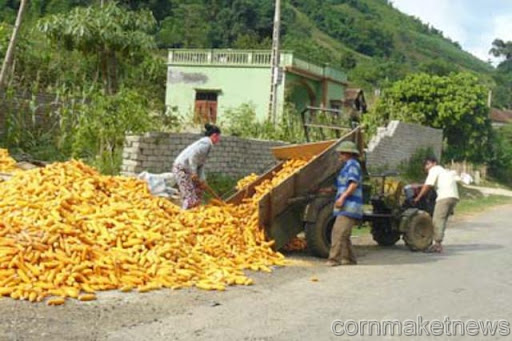 U.S. corn futures are expected to open higher Tuesday, rebounding on deteriorating crop conditions and easing concerns about Europe's debt crisis.
U.S. corn futures are expected to open higher Tuesday, rebounding on deteriorating crop conditions and easing concerns about Europe's debt crisis.
Traders expect corn to open 6 to 8 cents higher. In overnight trade, corn for July delivery at the Chicago Board of Trade was up 7 3/4 cents, or 1.4%, to $6.68 1/2 per bushel. December corn was up 7 1/4 cents to $6.34.
After tumbling 19% from a fresh all-time high earlier in the month, a weekly crop update could halt the descent, at least temporarily. The U.S. Department of Agriculture reported Monday afternoon that the portion of the crop rated good or excellent slipped to 68%, down from 70% the prior week. Traders were expecting the rating to hold steady or increase as much as two percentage points.
The decline was seen as a sign that crops in some areas are being hurt by excessive rains. Conditions fell in Illinois, Iowa and Minnesota, all key corn producing states.
Meanwhile, "ratings (are) not likely to improve next week after another round of heavy rains pounded areas of the Midwest yesterday," MF Global Broker Doug Bergman said in a note to clients.
Analysts say the U.S. must produce a very strong crop to replenish supplies that are historically tight, and expected to stay that way for months to come. While many traders have seen the weather as benign for the crop generally, flooding along the Missouri River and elsewhere is expected to hurt production. Cargill Inc. Chief Executive Greg Page estimates some 2.5 million acres of corn have been lost as a result of heavy rains and flooding in the U.S., the Financial Times reported on its website Monday.
Prices Tuesday could also be supported by outside markets, as worries about the debt crisis in Europe ease, analysts said, pressuring the dollar and lending support to commodities generally.
In export news, the Korea Feed Association has purchased 55,000 metric tons of optional-origin corn from Noble Resources at $339.99/ton, cost and freight, for arrival by Oct. 15, trading executives said Tuesday.
Despite the overnight gains, the market remains in a downward trend, analysts said, and many expect that the June high of $7.99 3/4 per bushel will hold for the foreseeable future.
"After recent bouts of selling and risk reduction, sentiment remains vulnerable," Barclays Capital said in a report.
Traders are looking ahead to Thursday reports from the USDA and planted acreage and corn stockpiles as of June 1. The reports, along with weather forecasts, will likely guide the market's direction throughout the summer, traders said.
Corn prices don't faze ethanol production
 When Congress signed the Energy Independence and Security Act into federal law in 2007, House Representative, Nick Rahall, stated the purpose of the act was to protect consumers and “increase the efficiency of products” among other things. But not quite four years later, the law, which promotes petroleum independence by backing alternative energy like ethanol, is pushing the markets to their threshold.
When Congress signed the Energy Independence and Security Act into federal law in 2007, House Representative, Nick Rahall, stated the purpose of the act was to protect consumers and “increase the efficiency of products” among other things. But not quite four years later, the law, which promotes petroleum independence by backing alternative energy like ethanol, is pushing the markets to their threshold.
The law is skewing normal supply-and-demand within the commodities markets to the point that corn market prices are soaring and land availability is becoming scarce.
The pressures are due to the “inelastic” properties of the law, which mandates that 15 billion gallons of ethanol be consumed per year by 2015, regardless of what the price of corn is, and regardless of what the price of crude oil is.
"Corn could be $2 a bushel or $10 a bushel, crude could be $50 a barrel or $100 a barrel and that 15 billion gallons has to be there. That means ethanol production is totally unresponsive to price. There's no flexibility,” said Wally Tyner, energy policy specialist.
To reach the renewable fuels standard, about 27 percent of the nation’s corn crop must be devoted to ethanol this year, leaving other corn consumers to compete for the remaining 73 percent, according to the Purdue Department of Agricultural Economics.
Supply disruptions—known as “shocks” in economics—force prices higher than they might be in a typical supply and demand system, Tyner said. Corn shocks are no exception: The price for corn topped $7 a bushel in recent months.
Combinations of shocks are in effect:
- Atypical wet spring across the Corn Belt, which delayed planting and potential fall yields
- The weakening of the U.S. dollar, maintaining high foreign demand
- Political discord in the Middle East oil-producing countries that spiked oil prices this spring and made ethanol production more economically feasible
- Grain stocks falling to dangerously low levels (The USDA is estimating about a three-week supply of U.S. corn by the end of August, while five weeks of supply is considered adequate)
While growers are enjoying high profitability, they may also be actively bringing corn prices back down. Farm Business Talk contributor, Canuck_2, predicts that, “All farmers will put just a little extra input into their crop because the prices allow it. Many will find just a little bit more land that they can plant and we 'the farmers' will bring prices down with a good if not bumper crop within 48 months.”
The other current effect of the law is on land availability. "In the U.S. we're about maxed out,” Tyner said. “There's little new land to grow corn. In 2008 when we needed more land for corn we got it from soybean acreage. When we needed more land for soybeans we got it from cotton acreage, and some from wheat. But now cotton prices are high, sugar is high, rice is high, corn is high, soybeans are high - everything's high. So there's no place to go within the U.S. for more land."
Tyner reported that since 2006, 66 million new acres of land have come into production for major agricultural crops globally, and another 27 million acres have shifted from other crops to corn, soybeans and rapeseed crops.
“Even with these added acres, prices are high because global demand from all sources, including ethanol, has grown faster,” Tyner said.
Some of the only survivors in the agriculture industry are livestock producers who can afford to pay more for corn now as pork prices are up 13 percent since 2008, and beef prices up 11 percent since then, Tyner said.
Others are calling on Washington to waive the ethanol mandate before prices climb higher, with knowledge that the Environmental Protection Agency has this ability if it is deemed that significant economic harm is occurring as a result of it. But Tyner says we’re not there yet.
“As long as oil prices are high and it’s profitable to produce ethanol, we’re going to keep doing it with or without the mandate, at least in the near term,” he said.
Source: http://www.agriculture.com/news/business/cn-prices-dont-faze-ethol-production_5-ar17360US corn snaps back on bargain hunting after sell-off
 SYDNEY: US corn futures rose more than 1 percent in early Asian trading on Tuesday as end users and bargain hunters stepped back into the market after prices tumbled on Monday as fears of slowing global growth rattled commodities markets. Chicago Board of Trade (CBOT) corn for July delivery climbed 1.48 percent to $6.36 per bushel, recovering from a 1.4 percent fall on Monday.
SYDNEY: US corn futures rose more than 1 percent in early Asian trading on Tuesday as end users and bargain hunters stepped back into the market after prices tumbled on Monday as fears of slowing global growth rattled commodities markets. Chicago Board of Trade (CBOT) corn for July delivery climbed 1.48 percent to $6.36 per bushel, recovering from a 1.4 percent fall on Monday.
Wheat for July delivery rose 1.08 percent to $6.57-3/4 per bushel, supported by demand for feed wheat because of high corn prices.
July soybeans added about 0.3 percent to $13.34-1/4 per bushel, extending modest gains on Monday after the US Department of Agriculture (USDA) reported fresh sales to China.
Investors have moved to liquidate long positions in grains due to worries about the Greek debt crisis, Chinese inflation and slow US growth.
After a year-long rally, prices are under fundamental pressure from the advancing US winter wheat harvest and improved crop weather for recently planted US corn.
Fund liquidation appears to signal the start of a downward trend after the year-long rally. During the latest reporting week, large speculators cut their net long positions in corn by 22 percent, and widened their net short positions in wheat to the largest since November 2010.
The USDA will issue its anxiously awaited annual acreage report on Thursday, along with its quarterly US grain stocks data.
The acreage report, based primarily on a survey of farmers in the first two weeks of June, could shed light on whether excessive rains and flooding from the upper Midwest to the South affected the seeding of the corn and soy crops.
Weekly export inspections of US corn issued Monday by USDA for the week ended June 23 totalled 28.9 million bushels, down 34 percent from the prior week and 27 percent lower than the same week a year ago. Corn is suffering stiff competition from feed wheat.
Brent crude prices rose on Monday, bouncing off lows as the euro rallied against the dollar on firmer hopes Greece will pass an austerity program as Europe fashioned a solution to Athens' debt woes. ICE Brent crude for August rose 87 cents to settle at $105.99 a barrel.
The euro rose on Monday as investors bet Greece's parliament will approve a fiscal austerity package needed for the country to get emergency aid and avoid defaulting on its debt.
US stocks rose from three days of losses on Monday, led by banks after news of more favourable capital requirements and optimism over Greece's austerity plan, but investors cautioned against high hopes. The Dow Jones industrial average gained 108.98 points, or 0.91 percent, to 12,043.56.
Thursday, June 2, 2011
CBOT corn outlook: Flat as traders view crop problems, demand
 CHICAGO (Dow Jones)--U.S. corn futures are expected to open flat Thursday as ongoing weather troubles are balanced by worries of weaker demand.
CHICAGO (Dow Jones)--U.S. corn futures are expected to open flat Thursday as ongoing weather troubles are balanced by worries of weaker demand.
In overnight trade, corn for July delivery at the Chicago Board of Trade was down 3/4 cent to $7.57 3/4 per bushel. December corn, which reflects supplies from this year's crop, was up 1/2 cent to $6.80.
Prices were initially weak in overnight actions as traders took profits following strong gains Wednesday. But the market recovered later in the session as a weaker dollar helped boost commodities generally.
The main focus for traders remains the weather. From drought in the southern U.S. to saturated soils in Ohio and North Dakota, "everywhere you look, there are weather problems," said Dave Marshall, an independent broker in Nashville, Ill.
"It's certainly not conducive to the idea that we need to grow record-size crops in order to meet the growing demand," Marshall said.
Supplies are already historically tight, with some grain end-users worried about where they will source supplies this summer before the new crop rolls in.
Corn's strength Wednesday came despite a stronger dollar and sharply lower equities amid worries about the economy. An economic slowdown, along with the high price of corn, could hurt demand, according to analysts.
Analysts noted that chicken producers are showing signs of cutting back, as a weekly U.S. Department of Agriculture report Wednesday showed eggs set in incubators fell 2%, the third consecutive decline.
Weather in the eastern corn belt could also limit the market's upside Thursday, analysts said. The Meteorlogix weather forecast calls for mostly dry weather through Monday. Still, "there remains some question as to whether all of the intended corn acreage will be planted across Indiana and Ohio," the forecaster noted.
Traders are assessing a wide variety of views on how many acres will be planted to corn. The Linn Group on Wednesday forecast planting would be 5 million acres below the USDA's most recent estimate due to the soggy weather.
Other market participants disagree. The chief executive for Bunge Ltd. (BG), a major grain trader and processor, said there were "pockets" of problems but that a very large grain and oilseed harvest was still likely this year.














